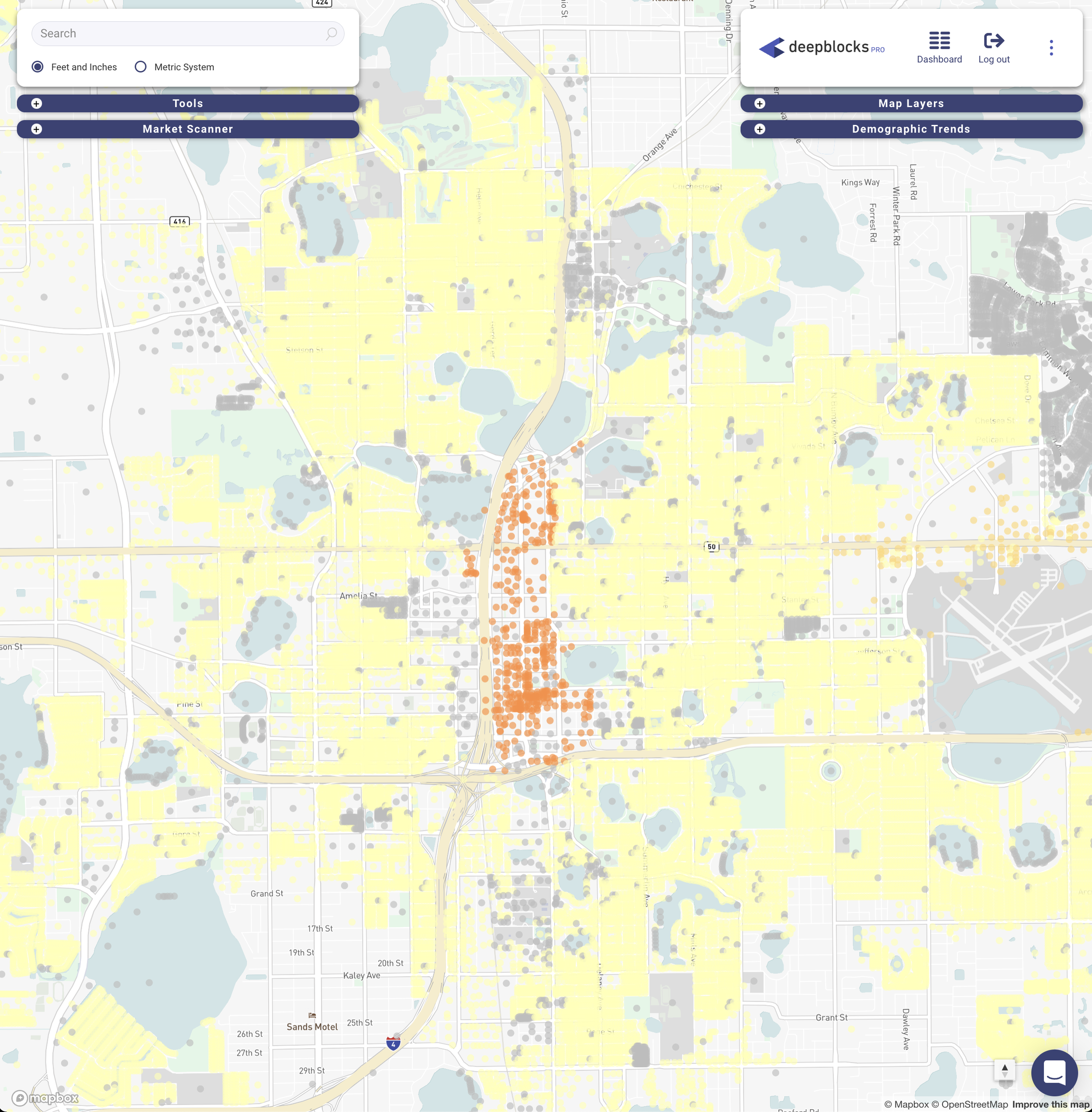Total buildable area is the ultimate zoning value because it can be used to compare all parcels across a city. Total buildable area normalizes parcels and allows us to compare how much we can build, apples to apples. At the city scale, this metric gives us an instant snapshot of where a city is planning its growth.
The following images compare the total buildable area across Miami, Jacksonville, and Orlando. The city's strategy for growth is evident. Miami seems bullish on its water-front areas while Jacksonville is, I would argue, as bullish but spread across a larger. Orlando, on the other hand, is painfully low-density.
Miami Zoning Map: Highlighting Total Buildable Area
Jacksonville Zoning Map: Highlighting Total Buildable Area
Orlando Zoning Map: Highlighting Total Buildable Area
Why is total buildable powerful for developers?
As a developer, we can instantly see where we should focus our efforts and where the development opportunities are. This data is digitized and available across 100 cities for the first time in real estate history. Deepblocks has not only digitized it but built tools over this data to reduce the efforts and increase efficiency in finding land and developable properties.
When we combine total buildable area with population trends, we might be able to predict growth opportunities years in advance. A seasoned developer might see this clearly if the datasets are in the same place. However, we are working on using artificial intelligence to bring this insight to everyone.
How is the total buildable area calculated from zoning ordinances?
The total buildable area requires multiple datasets, the zoning data and the parcel data. The parcel data we need is the lot size. If we were going further and calculating development multiples, we would also need to know the existing building area.
On the zoning side, the total buildable area might take different forms. The most straightforward calculation is when there is a FAR value. FAR stands for Floor Area Ratio. In some cases, FLR is used, which stands for Floor Lot Ratio. They mean the same thing; a multiple of the lot size.
When a zone does not have an FAR value, it usually has a limitation of area, including height, number of floors, setbacks, and lot coverage ratio. For example:
Lot size: 10,000 SF
Lot Coverage Ratio: 80%
Number of Floors: 5
Total Buildable Area = 10,000 * 80% * 5
Total Buildable Area = 40,000 SF
We believe the digitization of zoning will transform the development and real estate investment industry.
More will be revealed,
Olivia
If you’d like to hear more about exponentials, follow Deepblocsk on LinkedIn to stay updated whenever we release a new article.
Olivia Ramos is the CEO of Deepblocks, an AI-powered software that automates the site selection process for developers and investors.
See how quickly you can find your next development site here (our record is 3 minutes).





